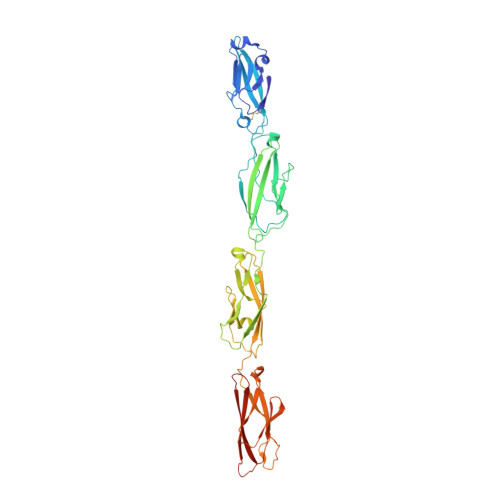Structural Basis of Diverse Homophilic Recognition by Clustered alpha- and beta-Protocadherins.
Goodman, K.M., Rubinstein, R., Thu, C.A., Bahna, F., Mannepalli, S., Ahlsen, G., Rittenhouse, C., Maniatis, T., Honig, B., Shapiro, L.(2016) Neuron 90: 709-723
- PubMed: 27161523
- DOI: https://doi.org/10.1016/j.neuron.2016.04.004
- Primary Citation of Related Structures:
5DZV, 5DZW, 5DZX, 5DZY - PubMed Abstract:
Clustered protocadherin proteins (α-, β-, and γ-Pcdhs) provide a high level of cell-surface diversity to individual vertebrate neurons, engaging in highly specific homophilic interactions to mediate important roles in mammalian neural circuit development. How Pcdhs bind homophilically through their extracellular cadherin (EC) domains among dozens of highly similar isoforms has not been determined. Here, we report crystal structures for extracellular regions from four mouse Pcdh isoforms (α4, α7, β6, and β8), revealing a canonical head-to-tail interaction mode for homophilic trans dimers comprising primary intermolecular EC1:EC4 and EC2:EC3 interactions. A subset of trans interface residues exhibit isoform-specific conservation, suggesting roles in recognition specificity. Mutation of these residues, along with trans-interacting partner residues, altered the specificities of Pcdh interactions. Together, these data show how sequence variation among Pcdh isoforms encodes their diverse strict homophilic recognition specificities, which are required for their key roles in neural circuit assembly.
- Department of Biochemistry and Molecular Biophysics, Columbia University, New York, NY 10032, USA.
Organizational Affiliation:



















